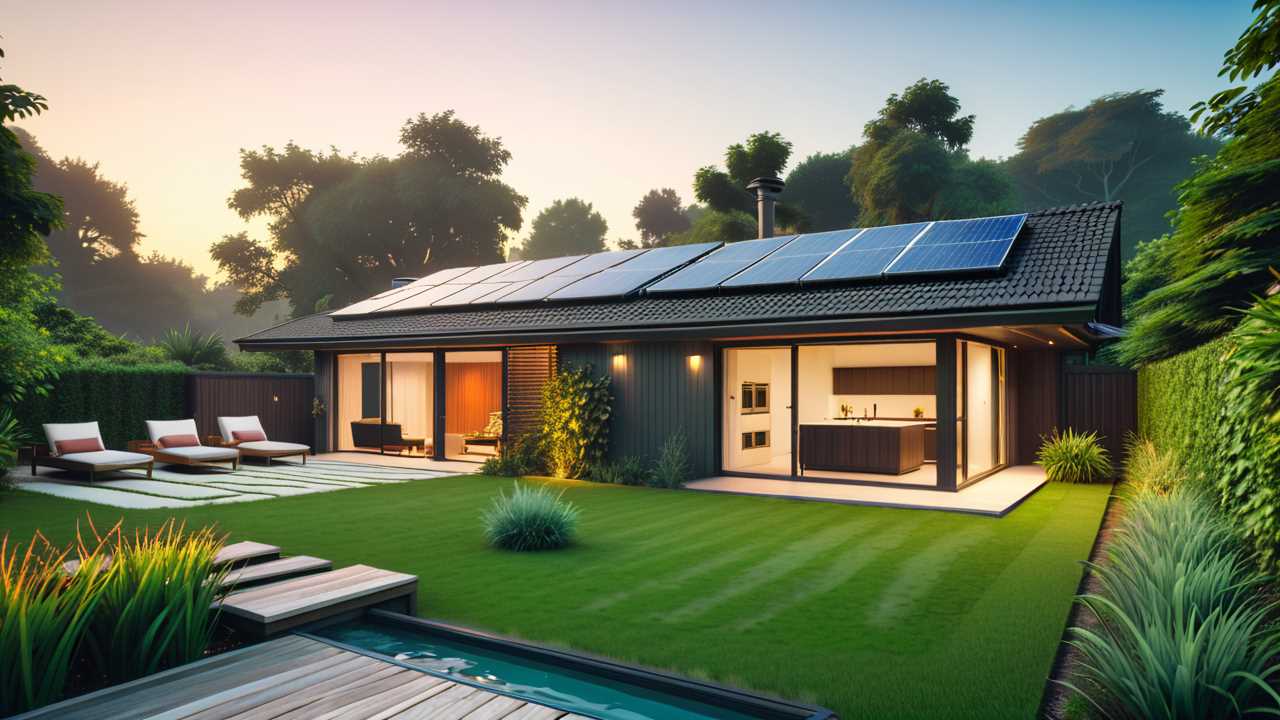
Whether you live in a bustling city or a serene countryside, the quest for sustainability in your living environment requires dedication and thoughtful consideration. With a multitude of options available, it can be overwhelming to determine where to start. However, by focusing on simple yet impactful changes, you can pave the way for a greener future. From adjusting your daily habits to making long-term investments, every action you take plays an important role in shaping a sustainable lifestyle. So, what are the key steps you can take to create a lasting impact on the world around you?
Assess Your Current Environmental Impact
To begin creating a sustainable living environment, you must first assess your current environmental impact through a comprehensive analysis of your daily habits and consumption patterns.
Start by tracking your energy and water usage, waste generation, and transportation methods. Look at your electricity bills to understand your energy consumption trends. Consider using tools like smart meters or energy monitors to gain real-time insights into your usage patterns.
Calculate your carbon footprint to see the impact of your activities on the environment. Analyze your water bills to identify areas where you can reduce water wastage. Keep a waste diary to monitor the types and amounts of waste you produce daily.
Evaluate your transportation choices and see if there are opportunities to carpool, bike, or use public transport more often. By collecting and analyzing this data, you can pinpoint areas where you can make changes to minimize your environmental impact and move towards a more sustainable lifestyle.
Implement Energy-Efficient Practices
Implementing energy-efficient practices involves optimizing your daily routines and using technology to reduce your overall energy consumption. Start by adjusting your thermostat settings; lowering it by just 1 degree can save up to 3% on heating or cooling costs.
Replace traditional incandescent bulbs with energy-efficient LED lights, which consume up to 80% less energy. Unplug appliances when not in use to prevent energy wastage from standby mode. Upgrade to energy-efficient appliances like refrigerators and washing machines, as they consume less electricity and water.
Utilize power strips to easily turn off multiple devices at once and prevent phantom energy loss. Consider installing a programmable thermostat to automatically adjust temperatures based on your schedule.
Lastly, conduct an energy audit to identify areas for improvement and track your progress over time. By implementing these energy-efficient practices, you can significantly reduce your environmental footprint and save on energy costs.
Reduce, Reuse, Recycle
Maximize your impact on sustainability by actively engaging in the principles of reducing, reusing, and recycling in your daily life. Reducing waste is essential; start by minimizing single-use items like plastic bags, bottles, and packaging. Opt for reusable alternatives such as water bottles, shopping bags, and containers. By doing this, you can significantly decrease the amount of waste that ends up in landfills or oceans.
When it comes to reusing items, get creative! Repurpose glass jars for storage, use old clothes as cleaning rags, or donate items you no longer need instead of throwing them away. Extending the lifespan of products reduces the demand for new resources and lessens the environmental impact of manufacturing.
Recycling plays an important role in closing the loop of the circular economy. Make sure to sort your recyclables properly and be aware of what can and can't be recycled in your area. By recycling materials like paper, cardboard, glass, and certain plastics, you contribute to conserving resources and reducing energy consumption.
Invest in Sustainable Upgrades
Upgrade your living space with sustainable features to reduce your environmental footprint and improve energy efficiency. Investing in solar panels can significantly cut down on your electricity bills while utilizing a clean and renewable energy source. According to the U.S. Department of Energy, a typical residential solar system could save over $20,000 in electricity costs over 20 years.
Additionally, installing energy-efficient windows and doors can improve insulation, reducing heating and cooling expenses by up to 25%, reports the Environmental Protection Agency.
Another sustainable upgrade to contemplate is switching to LED lights, which consume up to 75% less energy than traditional incandescent bulbs and last 25 times longer. The Department of Energy states that replacing just five of your most-used light fixtures with LEDs can save you around $75 per year.
Moreover, upgrading to a smart thermostat can optimize your heating and cooling systems, potentially saving you around 10-23% on your annual energy costs, as per the EPA. By making these sustainable investments, you not only reduce your carbon footprint but also enjoy long-term financial benefits.
Frequently Asked Questions
To involve your community in creating a sustainable living environment, start by organizing workshops, clean-up events, and educational sessions. Collaborate with local leaders and organizations, promote recycling, conserve water and energy, and encourage sustainable practices.
What Are Some Innovative Technologies for Sustainable Living?
You can investigate innovative technologies like solar panels, smart home systems, vertical gardens, and greywater recycling. These solutions promote energy efficiency, reduce waste, and improve sustainability in your living environment. Embrace these advancements for a greener future.
Are There Government Incentives for Implementing Sustainable Practices?
You'll find various government incentives for implementing sustainable practices. These may include tax credits, rebates, grants, and low-interest loans. Research programs like the Energy Star certifications or local initiatives to help offset costs and promote sustainability.
How Can I Make My Outdoor Spaces More Sustainable?
To make your outdoor spaces more sustainable, consider using native plants, installing rain barrels for water conservation, utilizing solar-powered outdoor lighting, composting organic waste, and implementing a drip irrigation system to reduce water usage.
What Are Some Ways to Reduce Water Consumption in a Household?
To reduce water consumption in your household, consider installing low-flow fixtures, fixing leaks promptly, using a dishwasher instead of handwashing, collecting rainwater for gardening, and updating appliances to more water-efficient models. Every drop counts!
 SportsHollywoodLifestyleFashionHome & GardenTrendsPrivacy PolicyTerms And Conditions
SportsHollywoodLifestyleFashionHome & GardenTrendsPrivacy PolicyTerms And Conditions
